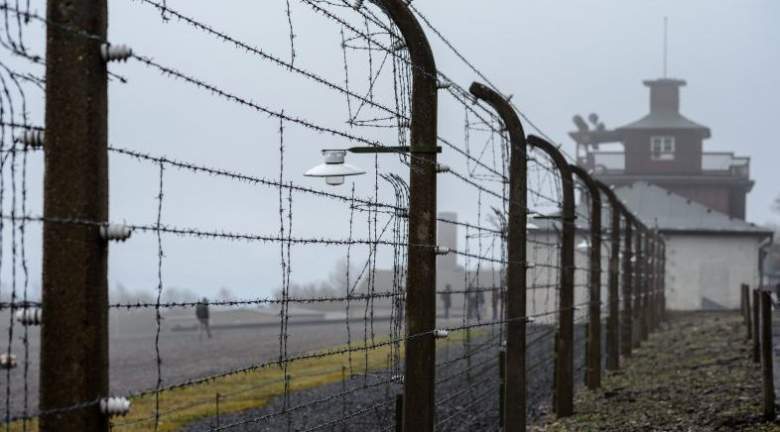
Getty Buchenwald today.
On April 11, 1945, American troops, led by General Dwight D. Eisenhower, liberated the Buchenwald concentration camp located near Weimar, Germany. Upon encountering the various atrocities committed by the Nazis at Buchenwald, Eisenhower would later write that “nothing has ever shocked me as much as that sight.”
Buchenwald was home to some of the most notorious and brutal Nazi criminals of World War II. Karl Otto Koch served as the camp commandant, accompanied by his wife, Ilse Koch, who earned the nickname “The Beast of Buchenwald” or “The Bitch of Buchenwald” due to her cruelty toward the prisoners and general inhumanity.
Walter Gerhard Martin Sommer was an infamous Buchenwald guard. Sommer was known for taking sadistic pleasure in torturing and executing the prisoners. Most notably, Sommer had two Austrian priests executed by having them crucified upside-down.
Buchenwald was liberated in April of 1945. The U.S. Army was led by Dwight D. Eisenhower, who later expressed his shock upon arriving at the camp and viewing the atrocities there. Approximately 20,000 prisoners were freed from the camp. Local German citizens from the Weimar region were brought to the camp and made to tour the grounds so that they could witness first-hand what had taken place there.
1. Ilse Koch, AKA “The Beast of Buchenwald” Was The Wife of The Camp Commandant, Karl Otto Koch
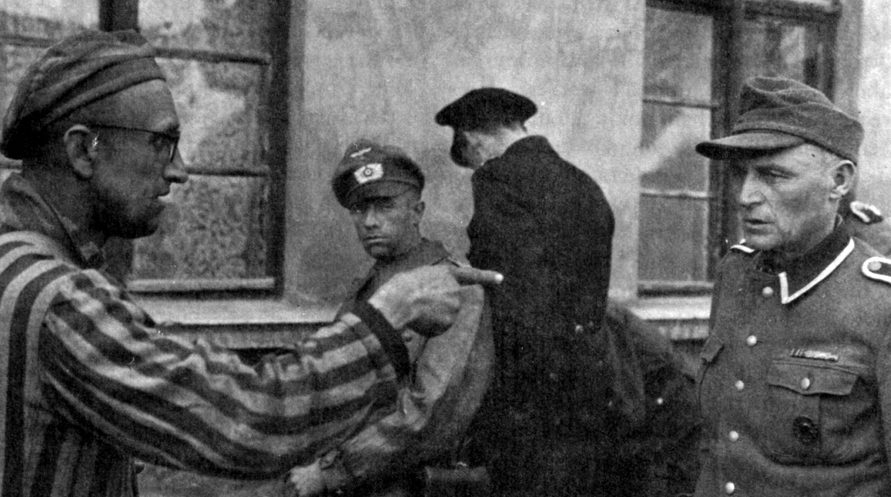
WikipediaAmerican troops arrive at Buchenwald; a former prisoner identifies a guard.
Karl Otto Koch was appointed to be the Commandant of Buchenwald, the highest ranking officer in charge of overseeing daily operations at the camp. He was accompanied by his wife, Ilse, also a prominent member of the Nazi party who joined in 1932. Ilse was known for her cruelty and depravity. Koch soon became known as “Die Hexe von Buchenwald” or the Witch of Buchenwald.
Ilse Koch is reported to have had several extramarital affairs with other members of the Nazi party. Erich Wagner, the prison doctor, was one of Koch’s alleged lovers, who was working on a thesis on prison tattoos while at Buchenwald. Koch, reportedly, took great pleasure in identifying prisoners with tattoos and having them murdered and skinned so as to provide Wagner with more specimens to study. It is believed that the rumors of prisoners’ skin being used to make lampshades originated with Ilse Koch.
Koch was notorious for wearing provocative clothing while patrolling the camp; daring any of the prisoners to look at her. If they did, she would whip them. She also enjoyed riding on horseback through the camp. Karl Otto Koch built Ilse a large, indoor riding arena on the Buchenwald grounds so that she could enjoy riding without getting too cold. The arena was expensive to construct and was done so with money stolen from the prisoners. It is estimated that the arena would cost about $1 million to construct today.
Koch was eventually arrested along with Karl Otto Koch and charged with her involvement in the torture and deaths of the prisoners at Buchenwald. She was also accused of making lampshades out of human skin; Koch always maintained that they were made of goatskin. While Karl Otto Koch was convicted, the charges against Ilse were dropped due to a lack of evidence. She was tried in 1947 and released in 1950. Due to a public outcry following Koch’s release, she was rearrested and tried again. Koch ultimately received a life sentence. She took her own life while incarcerated in 1967 and was buried in an unmarked grave.
2. Walter Gerhard Martin Sommer AKA “The Hangman” Was a Buchenwald Guard
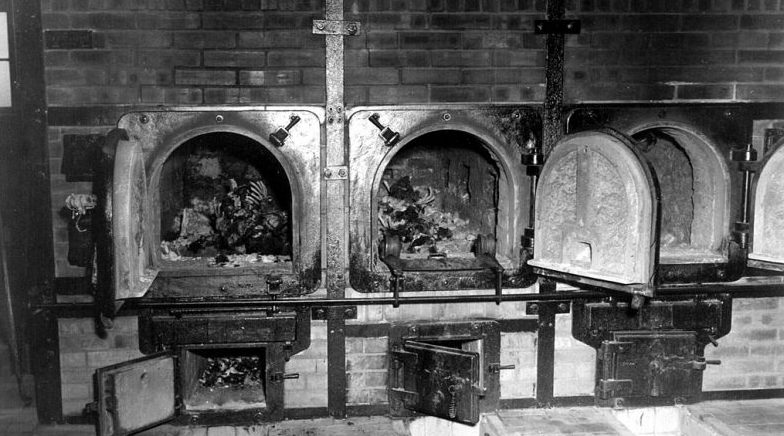
WikipediaThe camps crematorium.
Walter Gerhard Martin Sommer answered to charges of cruelty and corruption brought against him by the SS in 1943. Heinrich Himmler, the Reichsführer, appointed Dr. Georg Konrad Morgen, a judge, to investigate alleged misconduct by the guards at Buchenwald. In addition to investigating the war crimes of Karl and Ilse Koch, Morgen soon heard tales of Sommer’s cruel, sadistic behavior.
Morgen found that Sommer had a compartment under the floorboards in his office which was concealed by his desk. Inside the compartment were various instruments used to torture and kill his victims. Sommer was accused of injecting his victims with carbolic acid. He was also accused of killing his victims by injecting air into their veins, resulting in an embolism. Sommer is believed to have regularly tortured his victims for hours before killing them.
Sommer was also accused of ordering the deaths of two Austrian priests by having them crucified upside-down. He also beat prisoners to death, and caused them to freeze to death by having them strip naked and leaving them outside in the cold after throwing buckets of water on them in the winter.
As a punishment, Sommer was demoted in rank and was sent to fight on the Eastern Front. He would lose his right left and left arm in a tank explosion before being captured and taken prisoner by Soviet soldiers. Sommer was released in 1955 and lived as a free man until his death in 1988.
3. It is Estimated That 250,000 People Were Imprisoned at Buchenwald
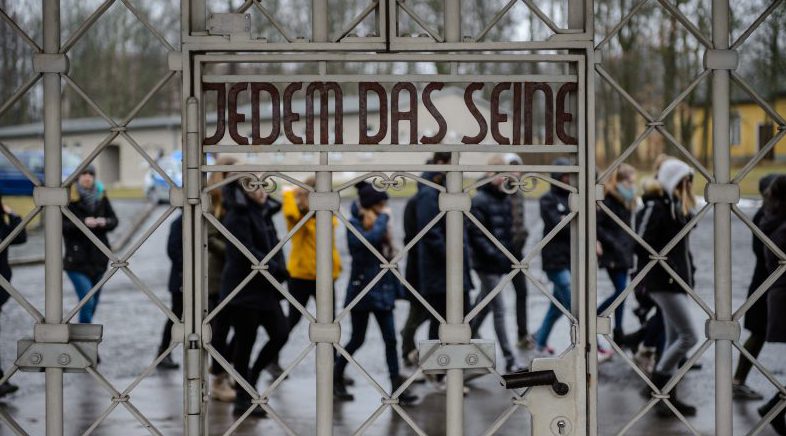
GettyVisitors arrive at Buchenwald.
Buchenwald was constructed near Weimar in 1937. At least 250,000 prisoners were held at Buchenwald over the course of World War II; the majority of whom were male. Due to the destruction of records, it is unknown how many prisoners died at Buchenwald; most estimates put the figure at approximately 50,000.
Many prisoners were worked to death at the camp; collapsing of exhaustion and starvation. Others succumbed to disease. Others were summarily executed. There are conflicting reports as to whether a gas chamber was in operation at Buchenwald. The remains of the prisoners were typically incinerate in the camp’s crematorium, adjacent to a space known as the “corpse room” where human bodies were stored prior to destruction.
Buchenwald was also the site of various Nazi medical experiments. “Beginning in 1941, a number of physicians and scientists carried out a varied program of medical experimentation on prisoners at Buchenwald in special barracks in the northern part of the main camp. Medical experiments aimed at testing the efficacy of vaccines and treatments against contagious diseases such as typhus, typhoid, cholera, and diphtheria resulted in hundreds of deaths. In 1944, Danish physician Dr. Carl Vaernet began a series of experiments that he claimed would ‘cure’ homosexual inmates through hormonal transplants,” reports ushmm.org.
4. Approximately 20,000 Prisoners Were Liberated From Buchenwald in April of 1945
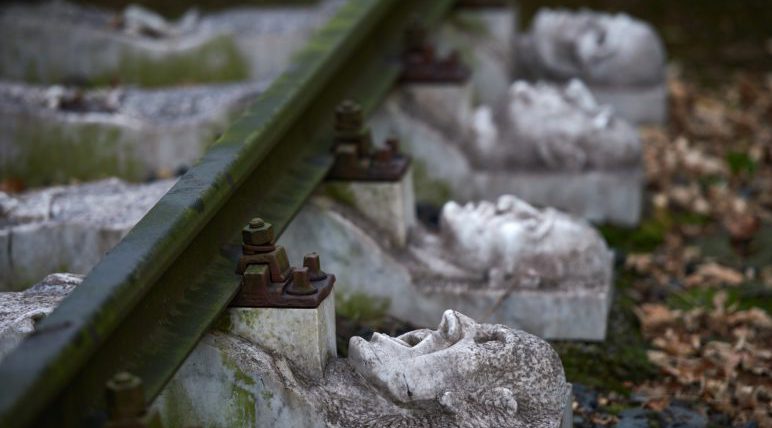
GettyA Holocaust memorial.
On April 11, 1945, the U.S. Army arrived at Buchenwald to liberate the camp. Prior to this, the guards, in anticipation of the arrival of American troops, attempted to evacuate approximately 28,000 prisoners. Already in poor health, this led to the deaths of about a third of the prison population.
The prisoners were aware of the imminent liberation of the camp prior to the arrival of the troops. Members of the resistance attempted to halt the camp’s evacuation, organizing an uprising and eventual overtaking of the guard towers. Some of the guards were killed; others fled into the woods; a few were left to be detained by the American soldiers.
“Soldiers from the 6th Armored Division, part of the Third Army, found more than 21,000 people in the camp. Between July 1937 and April 1945, the SS imprisoned some 250,000 persons from all countries of Europe in Buchenwald. Exact mortality figures for the Buchenwald site can only be estimated, as camp authorities never registered a significant number of the prisoners. The SS murdered at least 56,000 male prisoners in the Buchenwald camp system, some 11,000 of them Jews,” ushmm.org reports.
5. German Civilians Were Forced to Tour The Camp
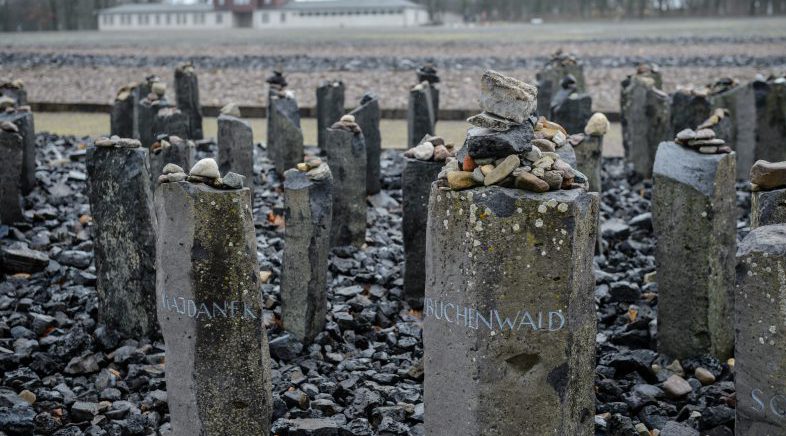
GettyBuchenwald Memorial.
Civilians were brought to Buchenwald from the surrounding Weimar region and forced to tour the grounds. Some residents had claimed to be completely ignorant of the atrocities that had been taking place at Buchenwald since its construction in 1937. Others simply refused to believe the rumors of the inhumane conditions at the camps, or denied them altogether.
The civilians were shown the dead, decomposing bodies of prisoners stacked like wood or simply left as they died. They viewed the crematorium, with the ovens still full of human remains. They also saw the emaciated, skeletal survivors, barely clinging to life. They saw the massive piles of shoes, clothing, jewelry and other possessions taken from the thousands of prisoners brought to the camp.
Following the camp’s liberation, Buchenwald served as a Soviet “special camp” until 1950. Subsequent to this, parts of the camp would be demolished, but the majority of it has been preserved as a memorial site and permanent exhibit. Visitors can tour the grounds today, greeted by the grim phrase “Jedem das Seine” displayed over the main camp gate. “Jedem das Seine” was Buchenwald’s motto. It translates to “to each his own,” but the phrase’s actual meaning is more ominous: “to each what he deserves.”